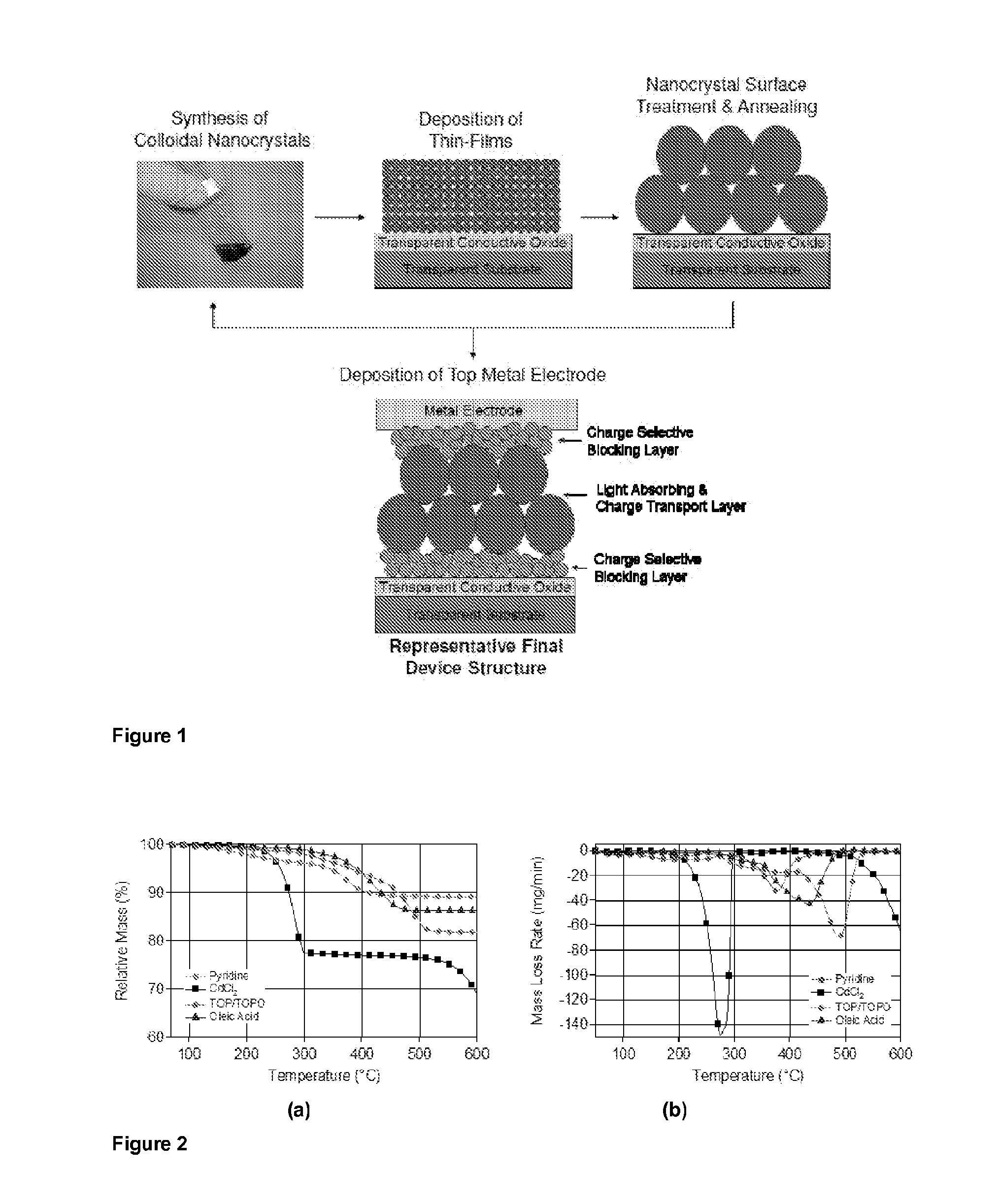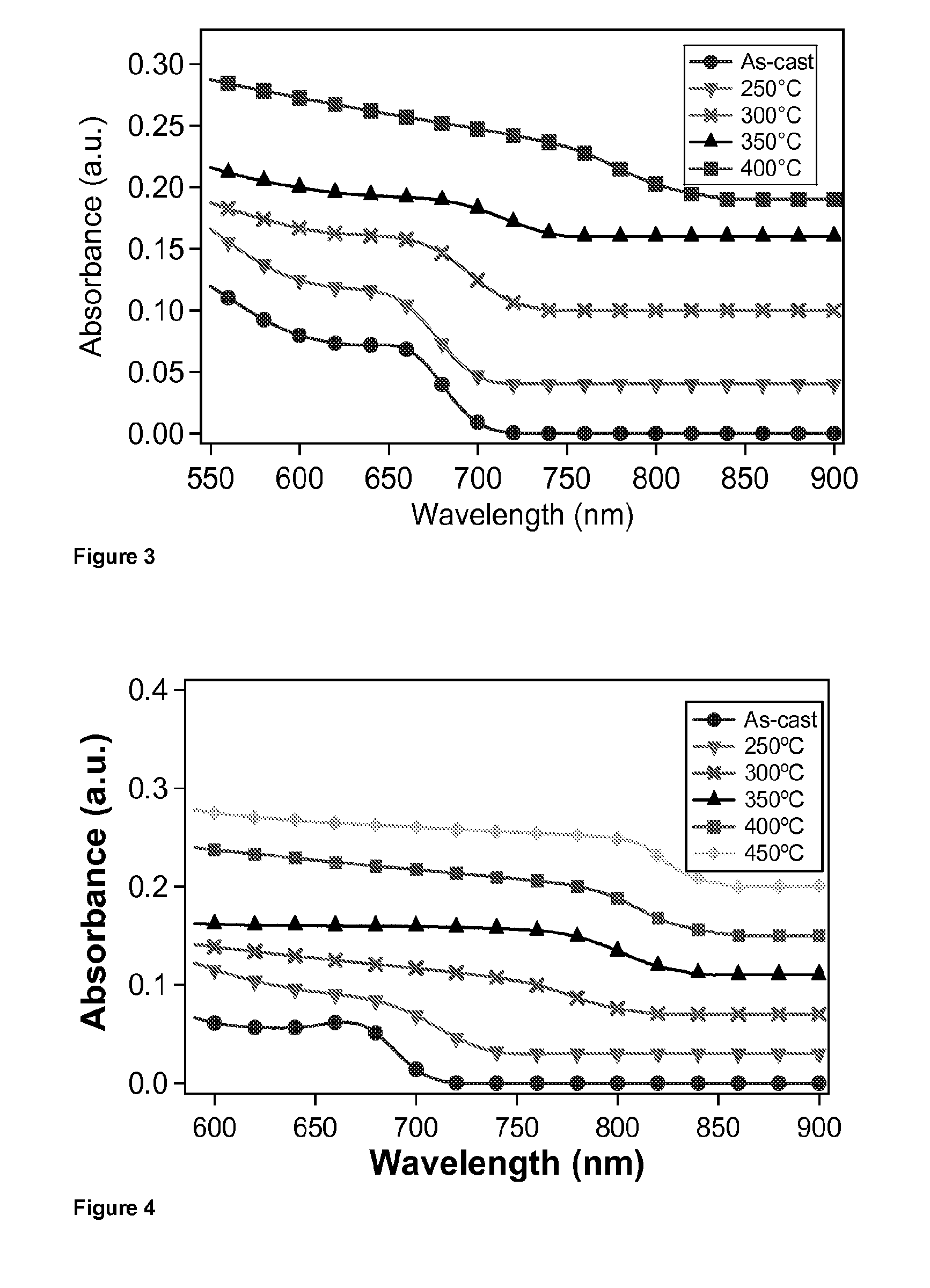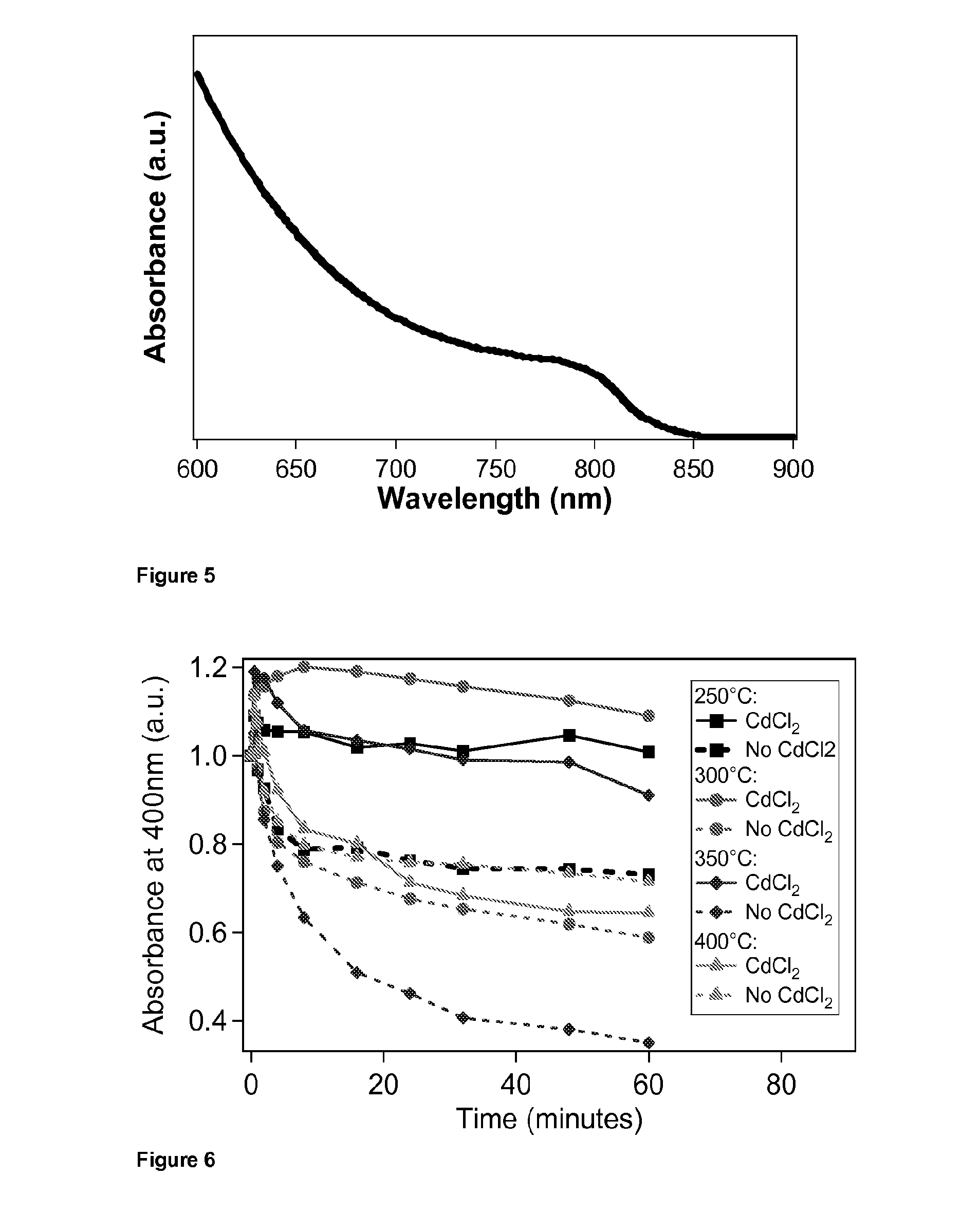Sintered device
- Summary
- Abstract
- Description
- Claims
- Application Information
AI Technical Summary
Benefits of technology
Problems solved by technology
Method used
Image
Examples
examples
[0213]Layer-by-Layer approach to Solar Cell Fabrication
[0214]The general schematic for fabricating solution processed inorganic solar cells using a layer-by-layer technique is shown in FIG. 1. The technique begins by synthesizing a dispersion of nanoparticles of a required composition by any acceptable synthetic method which exists in the prior-art. The as synthesized nanoparticles, which are dispersed in their growth solution, are purified by filtration, centrifugation or extraction, and combinations thereof. Following purification, the surface chemistry of the nanoparticles may need to be changed to ensure dispersion in a solvent which is compatible with multi-layer deposition. The nature of the solvent may depend upon the exact treatment conditions of the deposited film, but is typically toluene, chloroform, chlorobenzene, hexane, xylene, pyridine, propanol, ethanol, methanol, methylethyl ketone, dimethylsulfoxide, dimethylforamide, or water or mixtures thereof.
[0215]Once the nan...
PUM
 Login to View More
Login to View More Abstract
Description
Claims
Application Information
 Login to View More
Login to View More - R&D
- Intellectual Property
- Life Sciences
- Materials
- Tech Scout
- Unparalleled Data Quality
- Higher Quality Content
- 60% Fewer Hallucinations
Browse by: Latest US Patents, China's latest patents, Technical Efficacy Thesaurus, Application Domain, Technology Topic, Popular Technical Reports.
© 2025 PatSnap. All rights reserved.Legal|Privacy policy|Modern Slavery Act Transparency Statement|Sitemap|About US| Contact US: help@patsnap.com



